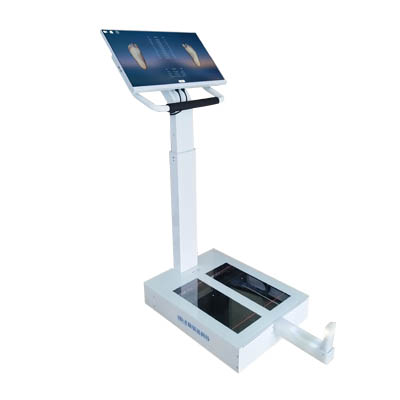
Tel :0755-86131192 86180201
Fax :0755-86180213
E-mail: info@3doe.com
Website: www.3doe.com
Address: 3A05, Minzhi Chamber of Commerce Building, Minzhi Avenue, Longhua District, Shenzhen
Are you here: Home > News > Industry NewsIndustry News
A New Method for Diagnosing Flatfoot: Precise Measurement with a Foot 3D Scanner
Time:2025-01-20 15:16:56Source:深圳市精易迅科技有限公司Views:424
Flatfoot is a common foot condition characterized by a collapsed arch, leading to excessive contact between the sole and the ground. This condition can cause discomfort during walking, foot pain, and even disrupt the biomechanical balance of other parts of the body. Traditional diagnostic methods for flatfoot, such as footprint analysis or visual inspection, are still widely used in clinical practice but may involve subjectivity and certain limitations. In recent years, the application of foot 3D scanners has provided an efficient, objective, and precise solution for flatfoot diagnosis.
Technical Principles
A foot 3D scanner is a device based on optical imaging or laser measurement technology that quickly captures detailed foot morphology and generates an accurate three-dimensional digital model. Its core technologies include high-resolution scanning and advanced modeling algorithms, which can accurately record key parameters such as foot length, width, and arch height. Compared to traditional two-dimensional footprint techniques, 3D scanning not only provides a comprehensive representation of the anatomical structure of the foot but also more intuitively showcases changes in the arch area.

Advantages of Application
Accurate Measurement of Arch Height
The foot 3D scanner can precisely measure the shape and height of the foot arch, assisting doctors in objectively determining the severity of flatfoot. Detailed data analysis makes it easy to identify whether the patient's arch structure falls below the normal standard.
Objective Diagnosis
Compared to traditional visual inspection, 3D scanners digitally present foot morphology features, reducing subjective judgment errors during diagnosis and providing more reliable support for medical professionals.
Intuitive Data Visualization
Scan results generate a 3D foot model that both patients and doctors can use to understand the condition of the foot. This visual representation improves diagnostic efficiency and enhances patient awareness of their condition.
Personalized Intervention Support
Based on the data collected by the foot 3D scanner, doctors can provide customized interventions such as designing tailored insoles or recommending appropriate foot support devices. These targeted solutions help alleviate symptoms and improve quality of life.
Practical Application Process
Preparation and Scanning
Before scanning, ensure that the device is functioning properly and has been calibrated. The subject should remove shoes and socks, place both feet on the scanning platform, and stand naturally with even weight distribution.
Data Acquisition
Once the scanner is activated, the device quickly captures the surface morphology of the foot, collecting critical data on the arch area. The entire process is typically completed within seconds, ensuring speed and efficiency.
Model Generation and Analysis
After scanning, the data is transferred to an analysis system to create a 3D digital model. Doctors can analyze the model in detail to evaluate the height, shape, and structural characteristics of the arch, determining whether flatfoot is present.
Diagnosis and Recommendations
Using the scan data, doctors can provide a clear diagnosis and develop appropriate treatment or correction plans based on the severity of the arch collapse.
Application Prospects
Foot 3D scanners have broad applications in medicine, sports science, and footwear design. Clinically, they assist doctors in efficiently screening for flatfoot and monitoring treatment outcomes. In sports, scanners provide precise foot morphology data for athletes, optimizing footwear design to enhance performance. Moreover, the rapid, non-invasive nature of the technology makes it suitable for large-scale screening programs.
The emergence of foot 3D scanners offers innovative technological support for flatfoot diagnosis. Their features of high-precision measurement, objective diagnosis, and personalized support address the shortcomings of traditional methods. By effectively utilizing this equipment, healthcare professionals can provide precise diagnostic services, improving patients' foot health. In the future, as technology continues to advance, the value of foot 3D scanners in clinical diagnosis and everyday health management will become increasingly significant.




